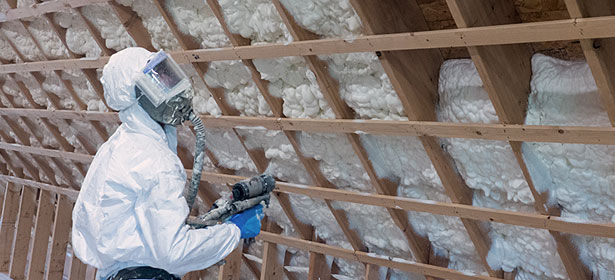Spray foam insulation has emerged as a popular choice for both residential and commercial buildings, renowned for its superior energy efficiency and versatility. Unlike traditional insulation materials, spray foam expands upon application, creating an airtight seal that minimizes air leaks and thermal bridging. This innovative solution not only enhances a building’s energy performance but also contributes to improved indoor air quality by reducing moisture and contaminants.
In this article, we will explore the various types of spray foam insulation, their benefits, and practical applications. From attics to crawl spaces, spray foam offers a robust insulating solution that helps homeowners and businesses alike save on energy costs while promoting sustainability. Whether you’re considering insulation for a new build or a retrofit project, understanding the advantages and installation methods of spray foam insulation will empower you to make informed decisions for your property.

Types of Spray Foam Insulation
There are two primary types of spray foam insulation: open-cell and closed-cell. Open-cell foam is lighter, softer, and more permeable, making it excellent for applications where flexibility is needed, such as soundproofing and filling irregular spaces. In contrast, closed-cell foam is denser and provides a higher R-value per inch, offering superior moisture resistance and structural integrity, making it ideal for areas exposed to extreme weather conditions. These distinct characteristics allow property owners to choose the type that best fits their specific insulation needs, whether that’s in attics, walls, or crawl spaces. For those in search of professional assistance, Reliable Spray Foam Insulation Houston TX can provide expert services tailored to your requirements.
Benefits of Spray Foam Insulation
One of the most significant advantages of spray foam insulation is its ability to create an airtight seal, effectively reducing energy loss and ensuring consistent indoor temperatures throughout the year. This not only leads to lower energy bills but also enhances the overall comfort of living and working spaces. Additionally, spray foam insulation helps to prevent moisture buildup, which can lead to mold and other contaminants that harm indoor air quality. By investing in spray foam insulation, property owners can enjoy long-term energy savings and a healthier environment, making it a sustainable choice for any building project.
In conclusion, spray foam insulation is a highly effective insulation solution that addresses multiple challenges faced by property owners, from energy efficiency to indoor air quality. Its unique characteristics of expanding upon application and providing an airtight seal set it apart from traditional insulation methods, ensuring not just thermal comfort but also the prevention of moisture-related issues. With the ability to choose between open-cell and closed-cell foam, users can tailor their insulation strategy to meet the specific needs of their buildings, enhancing both comfort and sustainability. As awareness of energy conservation and environmental responsibility continues to grow, the adoption of spray foam insulation is likely to increase, solidifying its position as a top choice for insulation in both new constructions and renovations.

